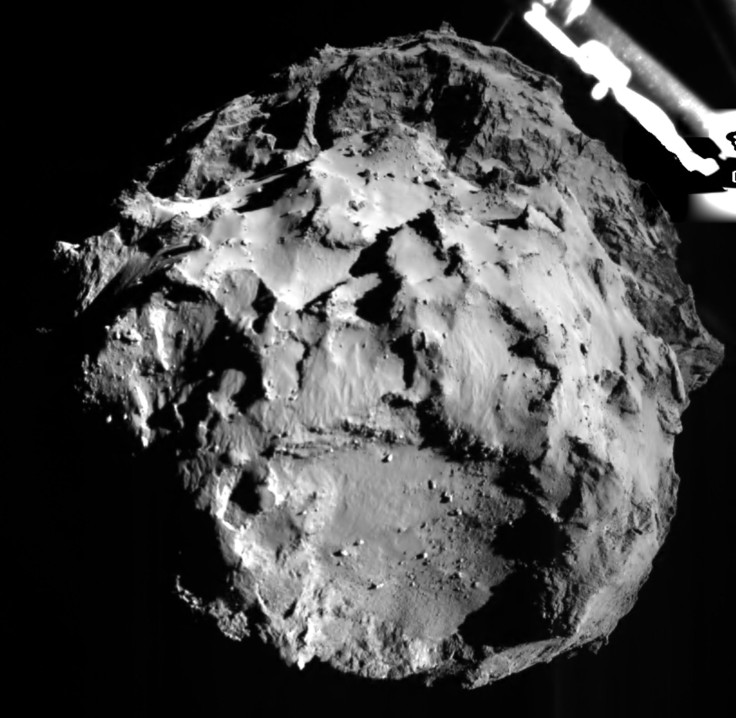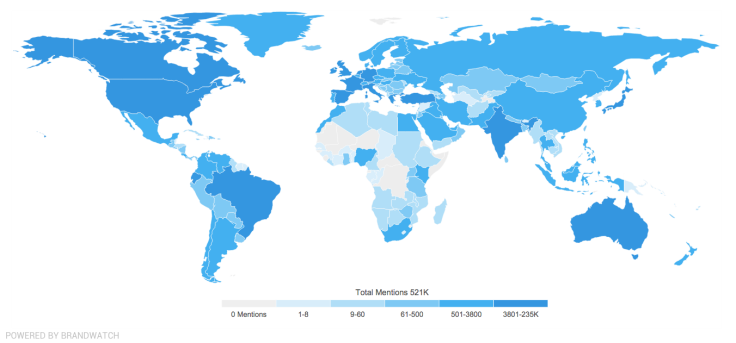Comet Landing: Philae Lander Successfully Reaches Comet 67P/Churyumov-Gerasimenko

The European Space Agency achieved the first ever comet landing Wednesday. ESA received the signal that Philae lander touched down on comet 67P/Churyumov-Gerasimenko at approximately 11:03 a.m. EST. After Philae is anchored to Churyumov-Gerasimenko, it will take its first photo from a comet's surface.
The Philae lander separated from the Rosetta spacecraft around 4:03 a.m. EST on Wednesday. The ESA had to wait patiently to receive confirmation of a successful departure and received signals from Philae and Rosetta around 30 minutes after separation. Philae continued on a controlled descent to the comet, which included taking photos of the separation and some measurements of the comet’s gravity, dust and plasma.
I see you too @philae2014! Here you are in my OSIRIS camera - legs out! #CometLanding pic.twitter.com/hmnfe2AkN2
— ESA Rosetta Mission (@ESA_Rosetta) November 12, 2014Philae’s Rosetta lander magnetometer and plasma monitor will observe the magnetic field of the comet’s nucleus and will be utilized to track the spacecraft’s descent as it creates its own magnetic field due to the onboard equipment. “The scientific objectives of the experiment are to detect and characterize the possible intrinsic magnetic field of the nucleus, the magnetic cavity around the comet, the plasma environment at the nucleus and the global electrical conductivity of the nucleus,” explains NASA.

Seven hours later, ESA received confirmation of the comet landing but Philae did not deploy its harpoons that would anchor the craft to the comet. With news of the first ever soft landing on a comet, the ESA control room erupted in cheers, and congratulatory messages were sent from around the world.

On Twitter, #cometlanding was trending and the achievement also created some unlikely stars, including Rosetta project scientist Matt Taylor who tattooed the landing on his leg.
Google also celebrated the achievement with a Google Doodle.
Our Dr. Jim Green congratulates @ESA on #CometLanding: "How audacious! How exciting! How unbelievable!" pic.twitter.com/4QKAgLaN3k
— NASA (@NASA) November 12, 2014"The landing, on a strangely shaped dual-lobe spinning target, is especially tricky, since any communication to the spacecraft takes nearly an hour round trip at the speed of light. We congratulate the European Space Agency on this historic achievement and look forward to the data from this mission as the comet approaches the sun," Patricia Reiff, associate director for outreach at the Rice Space Institute and professor of physics and astronomy at Rice University, said in a statement.
I think Europe just boldly went where no one else has gone before. @esa @ESA_Rosetta #Philae2014 #Rosetta #rosettamission
— Anne Glover (@EU_ScienceChief) November 12, 2014Comets are considered the "building blocks of the solar system," and could provide new insights into planet formation as well as the origin of water on Earth. The Rosetta mission was launched in 2004 and the spacecraft was placed in hibernation in 2011. The ESA woke the Rosetta spacecraft up in 2014 and completed the first ever rendezvous with a comet in August. Rosetta has been traveling with Churyumov-Gerasimenko since that time and will continue to ride with the comet as it makes its way around the sun. Philae will conduct science from the surface of the comet and transmit that data to Rosetta, which will beam that data back to Earth.
"We congratulate ESA on their successful landing on a comet today. This achievement represents a breakthrough moment in the exploration of our solar system and a milestone for international cooperation. We are proud to be a part of this historic day and look forward to receiving valuable data from the three NASA instruments on board Rosetta that will map the comet’s nucleus and examine it for signs of water," John Grunsfeld, astronaut and associate administrator for NASA’s Science Mission Directorate, said in a statement.
.@ESA_Rosetta See for yourself! ROLIS imaged #67P when we were just 3km away! Glad I can share. #CometLanding pic.twitter.com/b6mcid2fsn
— Philae Lander (@Philae2014) November 12, 2014ESA engineers and the the Philae Control Team are analyzing options for Philae to refire its harpoons. You can watch ESA's comet landing live stream here. Slooh will present its own comet live stream beginning at 2 p.m. EST.
© Copyright IBTimes 2024. All rights reserved.






















